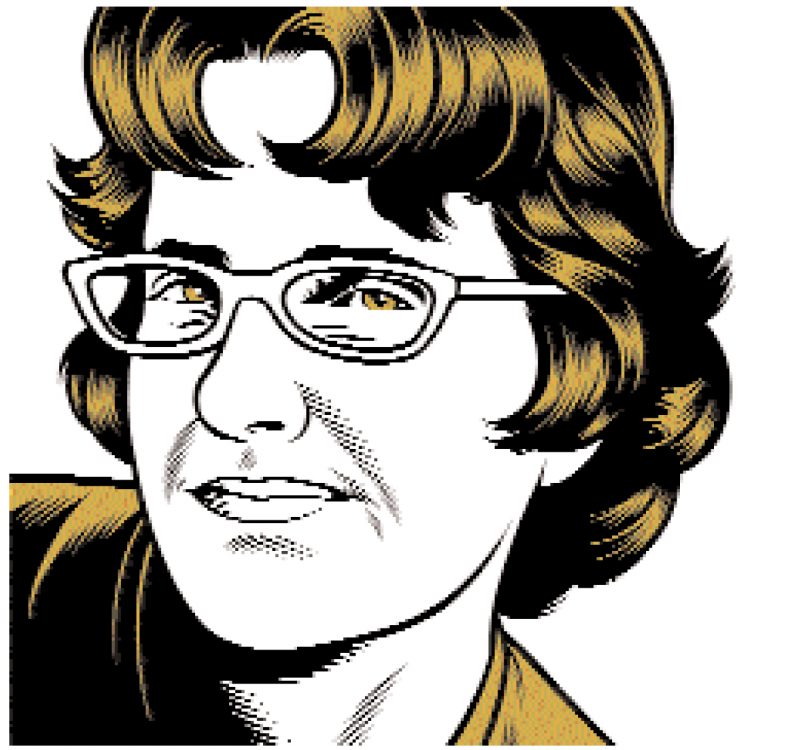At Danica Phelps’s recent opening (LFL Gallery, New York), Phelps moved through the crowd in a pink beaded gown and horn-rimmed glasses, with a small Jack Russell terrier at her side. Phelps had moved her home into the gallery as part of her show’s telltale (and ambitious) mission of “Integrating Sex into Everyday Life.” The occasion for her work’s thematic shift toward the erotic was the artist’s late-in-life revelation regarding sex and its efficacy. After a seven-year marriage to the first man she kissed, Phelps fell in love with her present partner, Debi, in 2002.
—Suzanne Snider
DANICA PHELPS: The most bizarre thing that has happened here [in the gallery] is that a nudist came in. He had called a few times before to ask if it was okay to come in, and— THE BELIEVER: Did he announce himself as a nudist?
DP: Yeah, he called and said, “I’m a nudist. I’d like to see the show nude,” basically. I guess he was going to drive up in a car or something. He called three times. On Saturday morning, I heard a rustling in the foyer and I could tell he was there, undressing. He came in and he wanted something more than a hello. I could tell, because he was standing, waiting. He came into the space and [one of the gallery owners] said, “You have five minutes to be in the gallery and look at the show, and then you should put on your clothes and leave.” He stayed and looked for a while and then he put on his clothes and said, “You’ve been very gracious. Thank you.” The strange thing was that he was not a confident nudist at all.
BLVR: He was an apologetic nudist?
DP: Very insecure. A little not-very-sane. It would have been an interesting idea if he were confident. It’s odd that a nudist would be uncomfortable because you don’t have to be nude.
BLVR: Well, he certainly leveled the playing ground. Do you think he specifically sought out your show because there are drawings of you and your girlfriend having sex—nudity involved?
DP: Maybe he felt that if I was exposing myself then he could expose himself.
BLVR: That would gain him entry to a great number of museums and galleries worldwide. I find the idea of the apologetic nudist fascinating. Isn’t it sort of against the philosophy to wear your clothes and then undress?
DP: Yes. II.
BLVR: Your artist’s statement was a very personal letter on monogrammed stationery… and what’s your middle name?
DP: Marie. And first of all, let me tell you, I actually used that letter to come out to my dad. I sent it to him....
You have reached your article limit
Sign up for a digital subscription and continue reading all new issues, plus our entire archives, for just $1.50/month.
Already a subscriber? Sign in





